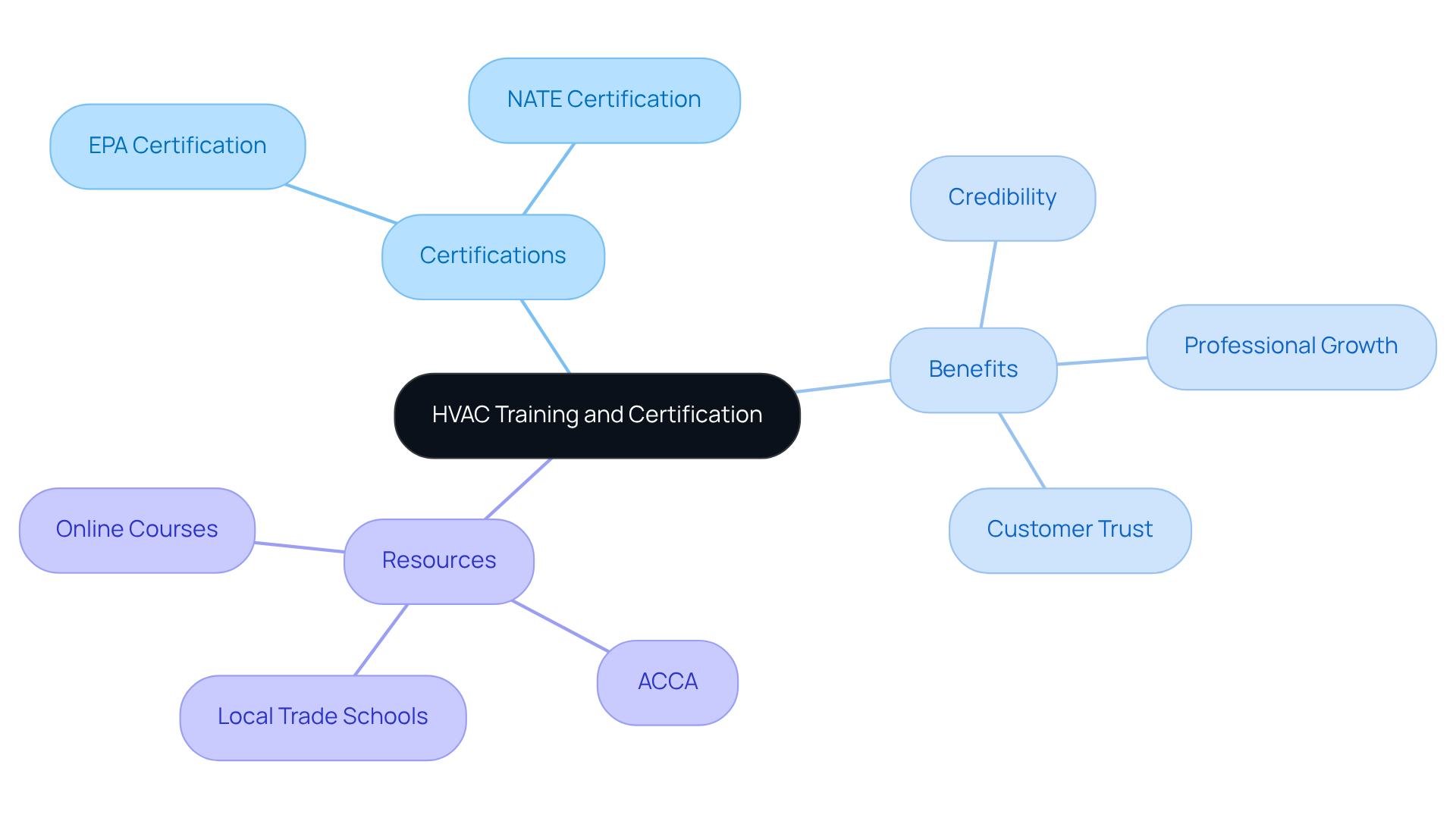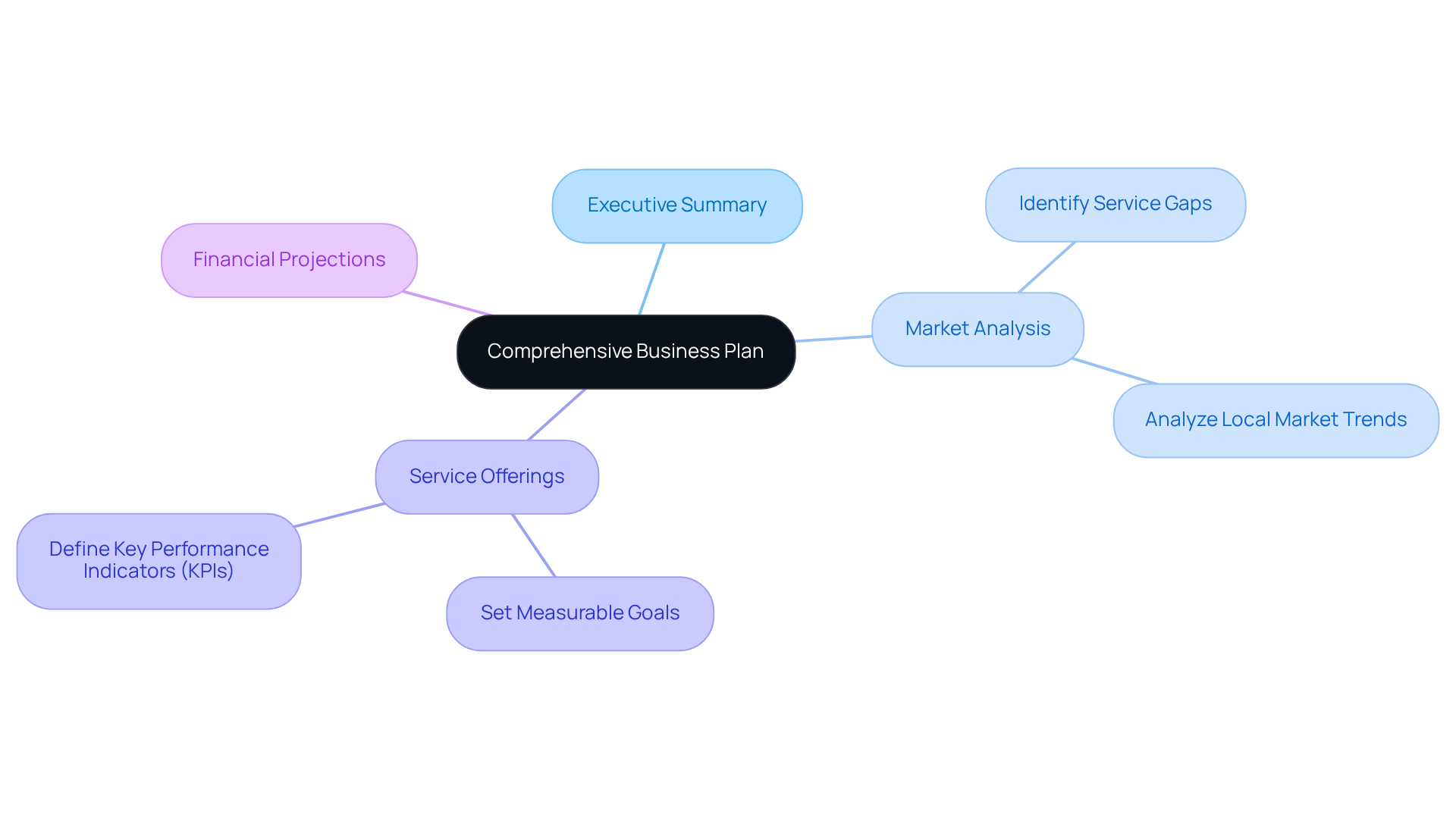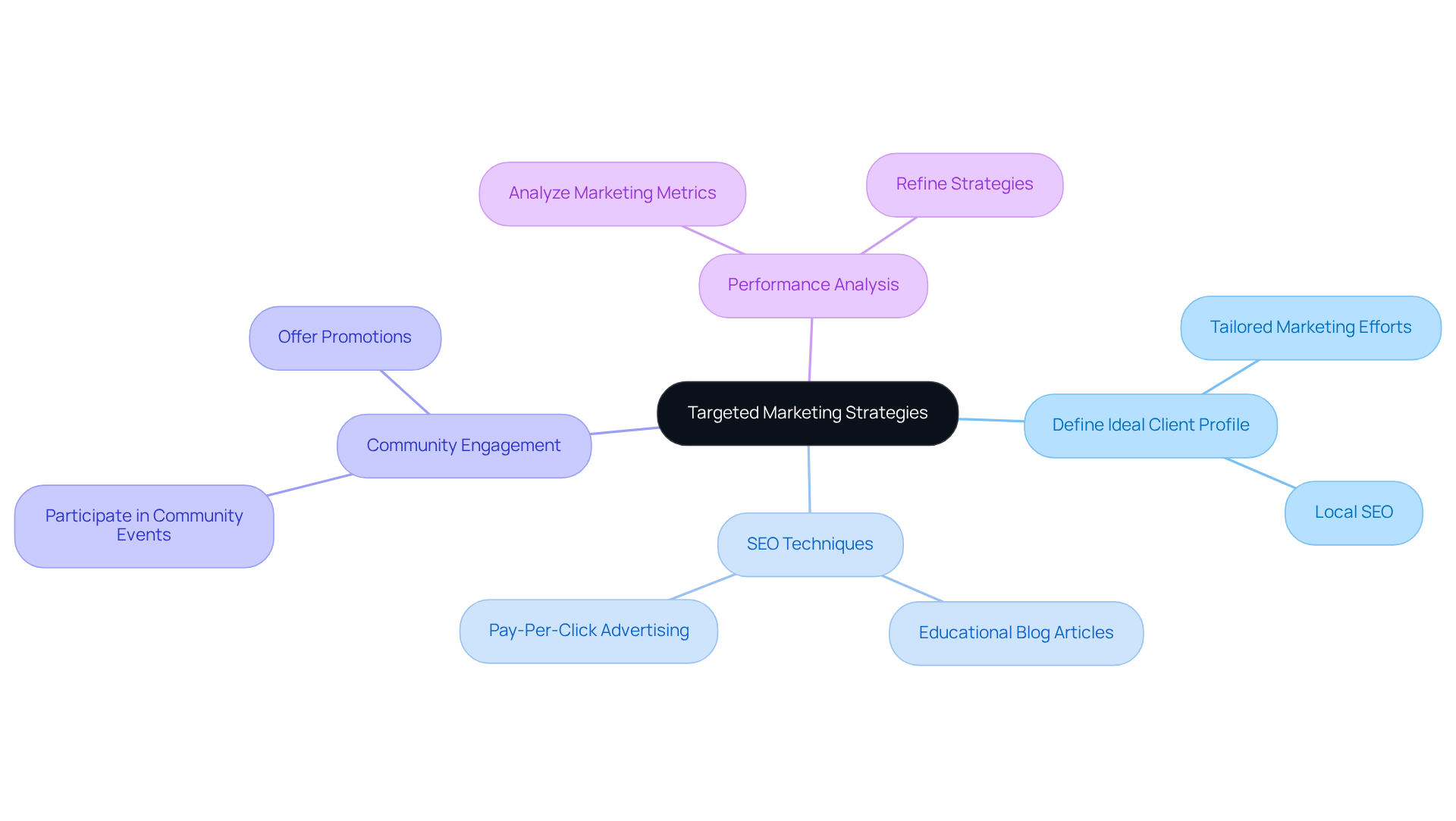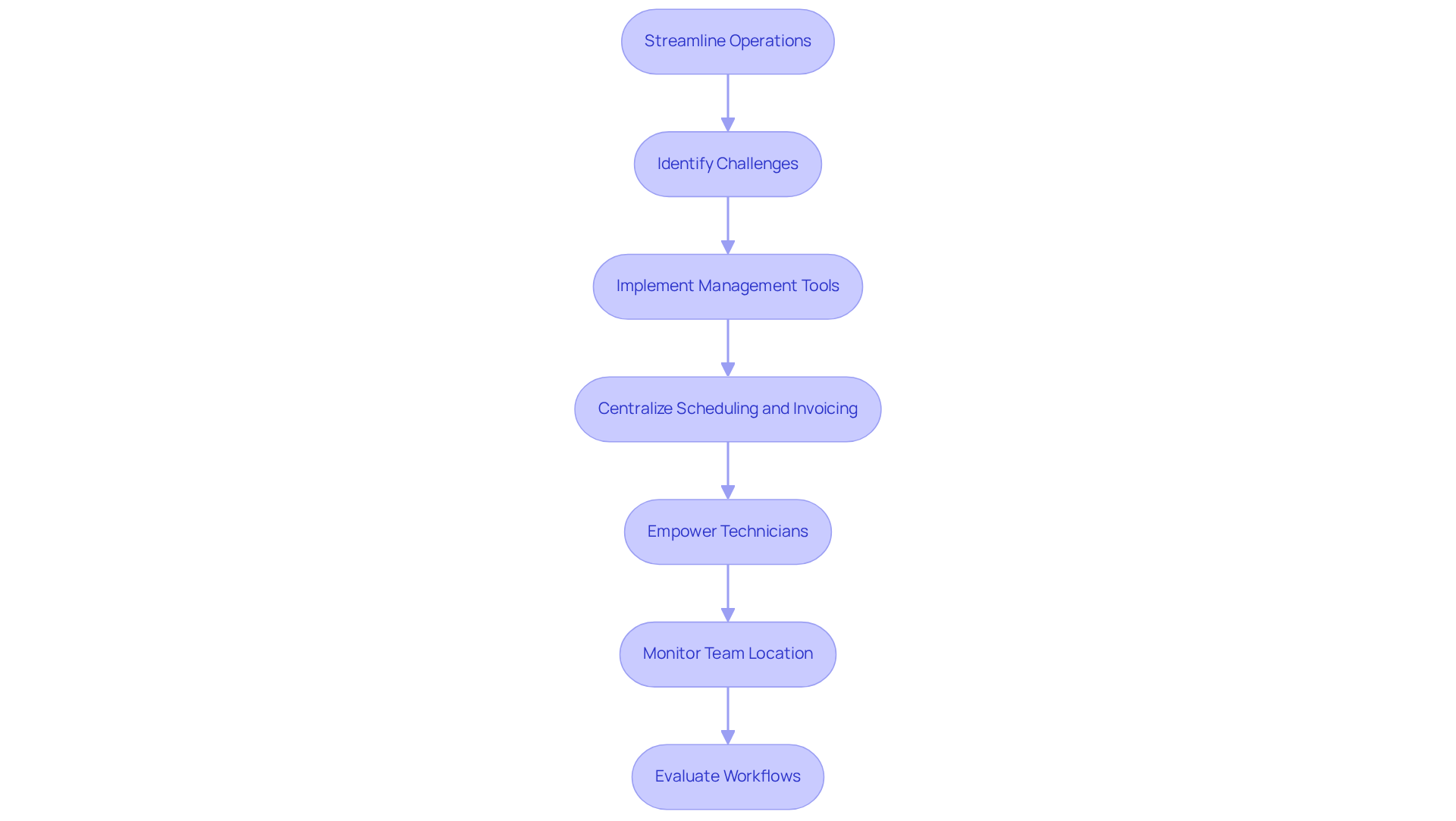Overview
For HVAC contractors, navigating the path to success can often feel overwhelming. The challenges they face, from gaining essential training and certification to developing a comprehensive business plan, can weigh heavily on their shoulders. These obstacles not only affect their operational efficiency but also impact their credibility and market visibility, leaving them feeling vulnerable in a competitive industry.
However, there is hope. By implementing targeted marketing strategies and streamlining operations with effective management tools, contractors can transform their businesses. Each of these best practices enhances not only their operational efficiency but also their client satisfaction, creating a nurturing environment for growth.
Ultimately, these strategies position HVAC contractors for sustained success and competitiveness. By embracing these practices, they can foster a sense of community and support, ensuring that they not only survive but thrive in their industry.
Introduction
In the challenging environment of the HVAC industry, success involves more than just technical expertise; it requires a thoughtful and strategic approach that includes training, planning, marketing, and operational efficiency. Many HVAC contractors find themselves navigating these complexities, often feeling overwhelmed by the demands of the market. By embracing best practices, they can discover pathways to growth and enhanced customer satisfaction. However, a pressing question arises: what specific strategies can genuinely uplift an HVAC business in today’s ever-evolving landscape? This article explores four essential practices that not only promise to boost business performance but also lay the groundwork for enduring success.
Obtain Essential HVAC Training and Certification
Investing in heating, ventilation, and air conditioning training and certification is not just a step towards improving skills; it’s a vital commitment to enhancing credibility and professional growth. Many contractors face the daunting challenge of staying relevant in an ever-evolving industry. Programs like EPA certification and NATE certification offer essential knowledge about HVAC systems, safety protocols, and energy efficiency, addressing these concerns head-on. Imagine the confidence a technician with NATE certification brings to their work—recognized for their expertise, they inspire customer trust, which can lead to higher pricing for services.
Moreover, the journey of continuous education is crucial. It helps professionals remain informed about the latest technologies and regulations, ensuring that they operate efficiently and in compliance with industry standards. For those with busy schedules, consider enrolling in accredited programs or online courses that offer flexible learning options. Resources such as the ACCA and local trade schools provide specifically designed for heating, ventilation, and air conditioning professionals. By taking these steps, contractors can not only enhance their skills but also foster a sense of community and support within the HVAC field.

Develop a Comprehensive Business Plan
For contractors in heating, ventilation, and air conditioning, developing a comprehensive business plan is not just a task—it’s a vital step toward realizing their vision and mission. Many contractors struggle with outlining their operational strategies, which can lead to missed opportunities. A solid business plan can serve as a guiding light, encompassing:
- An executive summary
- Market analysis
- Service offerings
- Financial projections
By analyzing local market trends, contractors can identify service gaps, such as energy-efficient installations, and adapt their offerings to meet these needs. Setting measurable goals and defining key performance indicators (KPIs) not only helps track progress but also empowers contractors to make necessary adjustments along the way.
Utilizing templates from resources like the Small Business Administration or industry-specific organizations can . It’s important to regularly revisit and update the business plan to ensure it remains relevant as market conditions evolve, fostering resilience and adaptability in an ever-changing landscape.

Implement Targeted Marketing Strategies
To thrive in the business HVAC sector, it’s essential to recognize the unique challenges you face and apply that truly resonate. Begin by thoughtfully defining your ideal client profile, allowing you to tailor your marketing efforts in a way that connects with them on a deeper level. In today’s digital age, utilizing techniques such as search engine optimization (SEO), pay-per-click advertising, and engaging social media campaigns can significantly enhance your online visibility.
Consider the power of sharing knowledge through educational blog articles that focus on heating and cooling system upkeep. Not only does this position your company as an expert in the field, but it also draws in organic traffic from those seeking guidance. Furthermore, investing in local SEO is crucial, as it ensures your business stands out in local search results—a vital aspect for service-based industries like yours.
Participating in community events and offering promotions can further elevate your brand awareness and foster loyalty among your clients. It’s about building relationships and trust within your community. Regularly analyzing your marketing performance metrics will empower you to refine your strategies, ensuring you maximize your return on investment. Remember, each step you take towards understanding and connecting with your clients is a step towards success.

Streamline Operations with Effective Management Tools
For HVAC contractors, streamlining operations is not just a goal; it’s a lifeline for enhancing productivity and ensuring client satisfaction. The challenges of managing schedules, invoicing, and communication can often feel overwhelming, leaving many feeling stressed and stretched thin. However, implementing management tools like Field Complete can transform these burdens into manageable tasks.
Imagine a world where scheduling, invoicing, and payment collection happen seamlessly, allowing you to focus on what truly matters—your clients. With just one click, Field Complete enables you to assign tasks and connect the right job with the right technician effortlessly. This centralized platform empowers your technicians by providing them access to job details and customer information on-the-go, significantly reducing miscommunication and enhancing service delivery.
Moreover, the ability to monitor your team’s real-time location through GPS tracking optimizes routing and minimizes travel time, directly impacting job completion rates. The capacity to establish priorities and emergency statuses ensures that your operations run smoothly, even in the face of unexpected challenges.
Regularly evaluating your workflows can help identify bottlenecks, and exploring software solutions like Field Complete can address these issues compassionately. Investing in training for your team on these tools is crucial; it ensures that they are utilized effectively, leading to improved operational efficiency and increased revenue. Together, let’s embrace these solutions to create a more for everyone involved.

Conclusion
Investing in the success of an HVAC business can feel overwhelming, as it requires a multifaceted approach that encompasses:
- Training
- Strategic planning
- Marketing
- Operational efficiency
Contractors often grapple with the need for essential training and certification, which not only enhances their skills but also builds the credibility necessary for fostering customer trust. A comprehensive business plan is crucial, as it lays the groundwork for navigating market challenges and identifying growth opportunities.
This journey is not without its hurdles, but implementing targeted marketing strategies can significantly ease the burden. By connecting with potential clients and establishing a strong local presence, HVAC businesses can thrive. Utilizing digital marketing tools and engaging with the community can enhance visibility and foster loyalty among customers. Furthermore, streamlining operations with effective management tools can improve productivity, allowing contractors to focus on delivering the exceptional service their clients deserve.
Ultimately, the path to a successful HVAC business is a continuous one, filled with opportunities for growth and development. It requires a dedication to professional development, strategic planning, and operational excellence. By embracing these best practices, HVAC contractors can position themselves for long-term success in an ever-evolving industry. Taking proactive steps today will not only enhance business performance but also create a foundation for sustainable growth and community trust in the future.
Frequently Asked Questions
Why is HVAC training and certification important?
HVAC training and certification are vital for improving skills, enhancing credibility, and promoting professional growth in a constantly evolving industry.
What certifications are mentioned in the article?
The article mentions EPA certification and NATE certification as essential programs that provide knowledge about HVAC systems, safety protocols, and energy efficiency.
How does NATE certification benefit HVAC technicians?
NATE certification boosts a technician’s confidence and expertise, inspiring customer trust and potentially allowing for higher pricing for services.
Why is continuous education important for HVAC professionals?
Continuous education helps professionals stay informed about the latest technologies and regulations, ensuring efficient operation and compliance with industry standards.
What options are available for HVAC training?
Professionals can enroll in accredited programs or online courses that offer flexible learning options, as well as resources from organizations like ACCA and local trade schools.
How can HVAC training foster community among professionals?
By enhancing their skills through training, contractors can develop a sense of community and support within the HVAC field.





